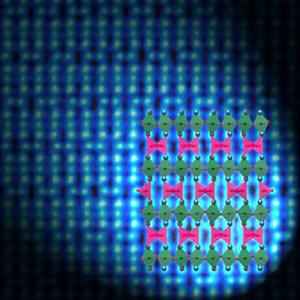
Thermomechanical degradation reduces the overall performance and lifetime of many perovskite oxides undergoing reversible redox reactions, such as those found in solid oxide fuel cells, rechargeable batteries, electrochemical sensors, oxygen membranes, and catalytic converters. To mitigate this degradation, these reactions must occur at lower temperatures. However, high temperatures (>700 oC) are often required in conventional perovskites for fast catalysis and bulk diffusion. The epitaxial stabilization of strontium cobaltite (SrCoOx) is here shown to lower the redox temperature to ~ 200°C. Switching between two distinct topotactic crystalline phases, either the perovskite SrCoO3-δ or the brownmillerite SrCoO2.5, occurs rapidly and reversibly. Theory and optical spectroscopy indicate that this transformation corresponds to a metal-insulator transition. Quite interestingly, the SrCoO2.5 film also exhibited significant activity for carbon monoxide oxidation, which suggests its potential as a heterogeneous catalyst.
H. Jeen, W. S. Choi, M. D. Biegalski, C. M. Folkman, I. C. Tung, D. D. Fong, J. W. Freeland, D. Shin, H. Ohta, M. F. Chisholm,, and H. N. Lee, “Reversible redox reactions in an epitaxially stabilized SrCoOx oxygen sponge” Nature Materials, DOI: 10.1038/NMAT3736 (2013).
W. S. Choi, H. Jeen, J. H. Lee, S. S. A. Seo, V. R. Cooper, K. M. Rabe, and H. N. Lee, “Reversal of the lattice structure in SrCoOx epitaxial thin films studied by real-time optical spectroscopy and first-principles calculations,” Phys. Rev. Lett. 111, 097401 (2013).
For more information

